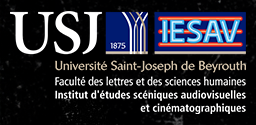Regards
Keywords
Memory, Mental representation, Reconciliation, Post-war period, Civic artist, Artistic practices
Document Type
Article
Abstract
Twenty-eight years after the ceasefire, the Lebanese civil war remains a constant theme for Beirut artworks and speeches, whereas society and institutions have made it a taboo. Art constitutes a fortunate entrance for apprehending the social world and its evolutions in a context of a long post-war period. The effectiveness of the reconciliation process, even its takeover by artworld actors, can be measured through unofficial paths. Moreover, the transformation of war social representations within the artworld, between a war generation and a post-war generation, reflects a redefinition of both the artist’s figure and function in its relationship to politics: formerly a historian artist, the current citizen artist figure reveals a significant change in the social conception of Lebanon, which henceforth rests on the detachment from urban communitarianism and identity labels.
Résumé
Vingt-huit ans après sa fin, la guerre civile libanaise demeure un thème prégnant des œuvres et discours d’artistes beyrouthins, là où la société et les institutions en ont fait un tabou. L’art constitue dès lors une entrée privilégiée pour appréhender le contexte social et ses évolutions dans l’après-guerre. L’effectivité du processus de réconciliation, voire sa monopolisation par les acteurs du monde de l’art, peut être mesurée par des voies non institutionnelles. Plus encore, la mutation des représentations de guerre dans l’art, entre une génération de guerre et une génération d’après-guerre, reflète une redéfinition de la figure et du rôle de l’artiste dans son rapport au politique : autrefois artiste-historien, l’artiste-citoyen d’aujourd’hui révèle un changement notable dans la conception sociale du Liban, qui repose sur la décommunautarisation urbaine et la désassignation identitaire.
Recommended Citation
Parenthou, Joséphine
(2019)
"De l’historien au citoyen : une nouvelle génération d’artistes libanais à la conquête de la réconciliation d’après-guerre,"
Regards: Vol. 21:
No.
21, Article 5.
Available at:
https://e-journals.usj.edu.lb/regards/vol21/iss21/5
Included in
Comparative Literature Commons, Creative Writing Commons, Film and Media Studies Commons, Fine Arts Commons, Theatre and Performance Studies Commons


